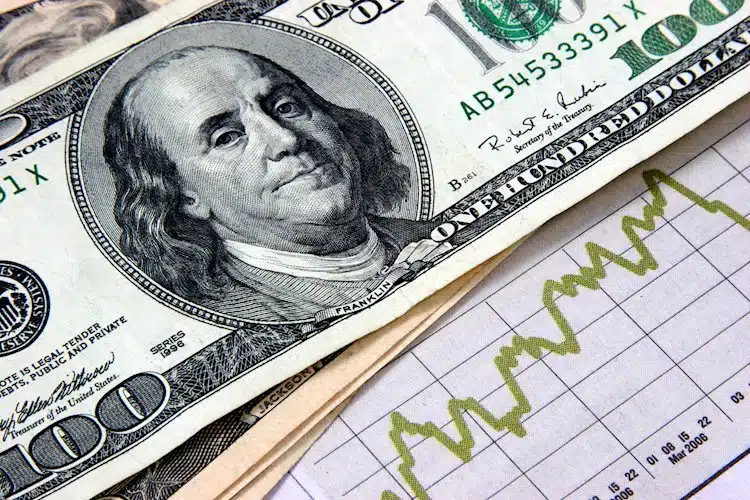The United States dollar index (DXY) has been facing a major roadblock as it has been capped at the 200-Day Moving Average (DMA) and the 38.2% retracement of its fall from October at 106.15/62. According to economists at Credit Suisse, there are predictions for a retest of the 100.82 YTD low. The DXY has been witnessing a rally that has been stopped from going beyond the 38.2% retracement of the 2022/2023 fall and the 200-DMA at 106.15/62. Due to this, bias is expected to view the strength from January as corrective and it is likely to cap the upper limit of a broader range.
The Credit Suisse economists added that if there is a sustained close below the 55-DMA at 103.51, then it will lend weight to their view. A break below 102.59 is still needed to clear the way for a retest of the 100.82 YTD low. However, if there is a close above the 200-DMA at 106.62, then it would warn of a more protracted phase of USD strength and a test of 107.80/99 would become more likely.
Understanding the DXY
The DXY is an index that measures the performance of the US dollar against a basket of major currencies, mainly the euro, yen, British pound, Canadian dollar, Swiss franc, and Swedish krona. The index is calculated as a weighted geometric mean of the exchange rates of these currencies against the US dollar. It provides a helpful tool for monitoring the greenback’s value relative to its major trading partners. The Index is an important benchmark that is regularly monitored by central banks, currency traders, and investors globally.
Factors Influencing the DXY
The DXY can be influenced by many factors, including economic indicators, interest rates, geopolitical developments, and overall market sentiment. The US economy’s strength or weakness plays an important role in determining the index’s performance. A growing US economy generally leads to a stronger dollar, as it attracts investors looking for safe and profitable opportunities.
Moreover, the US Federal Reserve’s monetary policy decisions impact the DXY considerably. When the Fed takes measures such as raising or cutting interest rates, it can lead to fluctuations in the dollar’s value, which, in turn, affects the DXY’s performance. A higher interest rate makes the dollar more attractive to investors, increasing its value, while a lower interest rate can diminish the dollar’s value.
Geopolitical developments and risks are also important factors impacting the DXY. Exogenous events such as political turmoil, trade wars, and economic sanctions can subtly and forcefully impact the index.
DXY Technical Analysis
From a technical perspective, the DXY has remained relatively flat over the last month. In early February, it gained briefly but has been struggling to provide investors with any significant upside momentum since. However, technical analysts indicate that an uptrend is apparent if the index crosses above its 200-day moving average (DMA) currently at 106.62. From there, the index could move towards the 107.80/99 level.
On the flip side, should the DXY fall below its 55-DMA at 103.51, it could lead to a broader decline, with the potential to test the 100.82 YTD low. Analysts believe that the intersection of some moving average bands could provide further support beyond the 100.82 YTD low. However, before the index gets to that point, it would have to break below the 102.59 level, which previously acted as near-term support.
Conclusion
The US dollar index (DXY) is pegged to an overall bearish trajectory of trade, as it is struggling with a significant barrier. It has been capped at the 200-day moving average and the 38.2% retracement level of the decline from October at 106.15/62. Credit Suisse economists have predicted a possibility of retesting the YTD low of 100.82. However, they also cautioned that if there is a close above the 200-DMA at 106.62, it could indicate a more extended phase of US dollar strength. Understanding the DXY requires monitoring various factors such as the US economy, interest rates, geopolitical developments, and market sentiment. It provides traders, investors and analysts with an important benchmark for financial markets globally, thus aiding in developing insightful market strategies.


